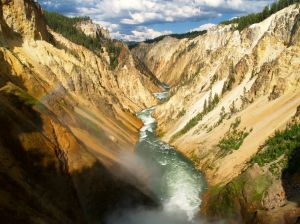What to Know About National Parks
Welcome back to your premier “camp grounds” on the Internet, AllCampgrounds.com.
Since we talked so much about KOA camp grounds the other day, I thought it would be a good idea to give a little general background on the many beautiful national parks in the U.S.
After all, the national parks are part of the public trust, and they are some truly beautiful, pristine places – and great for getting acclimated to the unique joys and challenges of camping … without wireless Internet.
What Types of National Parks Are There?
It’s kind of surprising at first to learn that “park” is a pretty broad term. The National Park System encompasses national battlefields, cemeteries, historic sites, historic trails, memorials and monuments, and a whole range of other significant sites. Even the White House is part of the National Park System. But for the purposes of finding good camp grounds or just enjoying nature, there are three you should probably pay special attention to.
National Parks: These are what most folks are thinking about when they think “national park.” They include large, generally unspoiled natural areas that showcase the splendor of the land. Hunting, fishing, or otherwise “using up” the resources of the land is illegal here, but exploring and tent camping is perfectly fine. These are some of the last places where you can really get lost. Famous sites like Yellowstone fall into this category.
National Preserves: These are common in Alaska, and are basically national parks where hunting or fishing (and other less enjoyable pursuits like mining and oil exploration) are still allowed. Though most of these are out in the frozen north, there are a few really amazing sites to be found elsewhere in the U.S., like the Tallgrass Prairie National Preserve in Kansas, perfect for hiking. There are also preserves in Texas and Florida.
National Recreation Areas: Centered on large reservoirs, these sites offer water sports and recreation. Though they’re mostly set in the vicinity of large populated areas, there’s also surprisingly good “backcountry” camping to be found. Some of the greatest fishing spots in the U.S. are located in National Recreational Areas; for example, the Amistad National Recreation Area in Texas hosts almost 200 bass tournaments every year.
What are the Rules for Using National Park Camp Grounds?
Whether they’re private or public, all campsites have some rules, and if you want to go camping quick, you’re best off knowing before you go. Generally speaking, you should try to leave the park exactly as you found it: that includes little (but important!) things like litter and big things like not interfering with the wildlife. The golden rule is “leave no trace.”
There are often specific areas in national parks where tent camping is permitted. Likewise, in the more populous areas of the parks, fires are usually restricted to certain places, such as grills designated by the park. Further out in the trail, it may be okay to make your own fire ring, but be sure you have sand or water close at hand to keep it safe.
There are often other things to be aware of, and these change from site to site and. As any outdoor adventurer knows, one quirk of the landscape and a little “act of nature” can have you facing unexpected conditions in a hurry: fire, flood, or worse. Touch base with your local ranger station and get the facts before you go too far afield. It also doesn’t hurt to inform the rangers of your plans. They’re there to help you (and nature!) stay safe.
But That’s Not All …
There are also National Forests (of course!) and a slew of other public lands where you could find your home away from home. We’ll be exploring those and more as we continue our journey on the AllCampgrounds blog. For now, I’m about ready to set up camp, so see you next time!


